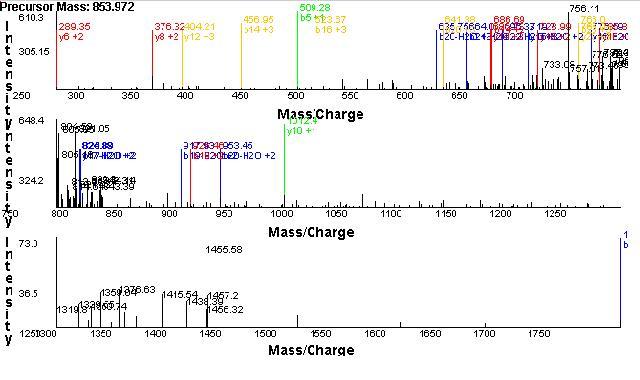Ions
Advertisement
PH Scale v.1.03
Analyze the pH of certain substances with this tool. Test the pH of things like coffee, spit, and soap to determine whether each is acidic, basic, or neutral. Visualize the relative number of hydroxide ions and hydronium ions in solution.
Advertisement
Neuron v.1.00
Stimulate a neuron and monitor what happens. Neuron enable you to simulate and monitor the neuron activity. Pause, rewind, and move forward in time in order to observe the ions as they move across the neuron membrane.Sample Learning Goals 1. Describe
Ion Lenses v.1.2
Analyze charged particle trajectories with this tool. Ion Lenses help you calculate the trajectories of charged particles (ions and electrons) in an electrostatic field that acts as an electrostatic lens. It enables you to adjust the potentials of 6
Sector Field MS v.2.1
Analyze ions separation fast and easy. Sector Field MS simulate the separation of ions of different masses in a magnetic sector field. Users can adjust both the accelerating voltage and the magnetic field strength, and select from a small number of
FragmentationAnalyzer v.1.5.8
FragmentationAnalyzer is a standalone Java tool for analyzing MS/MS fragmentation data. Fragmentation Analyzer is a software for analyzing MS/MS fragmentation data. Currently nine different analysis types are supported: 1. Spectra Visualization -
APBSmem v.1.08
APBSmem is a graphical interface for electrostatic calculations at the membrane. Poisson-Boltzmann electrostatics calculations made easy. A Java-based graphical user interface for Poisson-Boltzmann electrostatics calculations at the membrane.
Atomic Spectroscopy v.1.0
Analyze atomic spectra fast and easy. Atomic Spectroscopy help you analyze atomic spectra. Atomic spectra can be used to quantitatively determine more than 70 chemical elements. In order to be able to detect the atomic spectrum,
Metallic conductor v.1.0
Metallic conductor help you study electromagnetism. Study conductivity with this simulation. How can a lot of loose electrons cause a metal to be a good conductor? This is because each electron is an electric charge that is free to move. Moving
FieldLines v.1.1.1
FieldLines is a screen saver that simulates the electric field lines emitted by charged particles.

Proteomic Mass Spectrometer Interface v.1.0
A Mass Spectrometer B and Y ion labeling software for proteomics researchers.